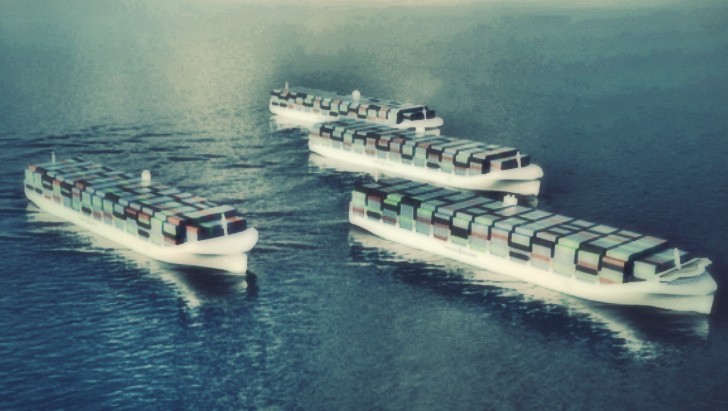Year 2025, a 400 meter long cargo ship slowly travels across dark sea waters... There’s no sign of life onboard; nobody seems to be on the bridge to guide the ship and no one seems to pick up the CB radio. Is this a scene from an apocalyptic movie? Nope, this is project MUNIN.
Scandinavian research organization SINTEF’s subsidiary MARINTEK believes that in about ten or twenty years most of the cargo ships sailing the globe will be unmanned. Seven other EU companies are into that in a pretty massive project called MUNIN.
Unmanned vessels may be the answer to a more attractive and sustainable maritime industry. These ships could reduce speeds from 16 to 11 knots and save 50 percent of the fuel they currently burn along with CO2 and other emissions.
Further advancements can also ditch auxiliary ship engines that create electricity for equipment and power water jets in case the main unit is malfunctioning. Switching to other fuels is also an idea, like some less expensive liquid natural gas.
Researchers believe one skipper could handle as many as 10 cargo ships from the comfort of a soft chair in a port office. However, special trained captains will still be required to drive them in and out of the ports.
This has to be done on current ships, following to gradually reduce the number of personnel needed to take a vessel from one shore to another. If the project still stays strong, boat-makers will then be given the rights to design new ships that completely take out the human factor.
Some limitations will be applied at first, with the system not being implemented for ships transporting high-priority cargoes (cars or electronics) or potentially dangerous ones (petroleum and other flammable/toxic substances).
Rolls Royce already published conceptual sketches for its own autonomous vessels as you can see in the pictures here. Notice how the ships have been designed to allow for as much cargo space as possible.
Sounds very interesting and all, but all I can think of are some gatling gun turrets will be needed on these unmanned ships, because you know... pirates.
The ocean is boring and dangerous
The premises out of which the project started to take shape are pretty simple: being each day on a trans-oceanic ship is not only harsh and dangerous but also very boring. Usually, cargo ships are pushed to the limit in order to make the trip shorter and this results in an increased fuel consumption and occasional accidents.MUNIN
Project MUNIN aims to eliminate the human factor from large cargo ships, thus no needing to keep the vessel in high gear, or having to carry food and other commodities for life onboard.Unmanned vessels may be the answer to a more attractive and sustainable maritime industry. These ships could reduce speeds from 16 to 11 knots and save 50 percent of the fuel they currently burn along with CO2 and other emissions.
Further advancements can also ditch auxiliary ship engines that create electricity for equipment and power water jets in case the main unit is malfunctioning. Switching to other fuels is also an idea, like some less expensive liquid natural gas.
Researchers believe one skipper could handle as many as 10 cargo ships from the comfort of a soft chair in a port office. However, special trained captains will still be required to drive them in and out of the ports.
Implementing the system
The technology to create unmanned vessels is already available. Just like autonomous driving systems found on cars today, cargo ships are fitted with cruise control, GPS and even collision avoidance systems. The only thing needing to be done is proving that the whole idea works properly.This has to be done on current ships, following to gradually reduce the number of personnel needed to take a vessel from one shore to another. If the project still stays strong, boat-makers will then be given the rights to design new ships that completely take out the human factor.
Some limitations will be applied at first, with the system not being implemented for ships transporting high-priority cargoes (cars or electronics) or potentially dangerous ones (petroleum and other flammable/toxic substances).
Rolls Royce already published conceptual sketches for its own autonomous vessels as you can see in the pictures here. Notice how the ships have been designed to allow for as much cargo space as possible.
Sounds very interesting and all, but all I can think of are some gatling gun turrets will be needed on these unmanned ships, because you know... pirates.


